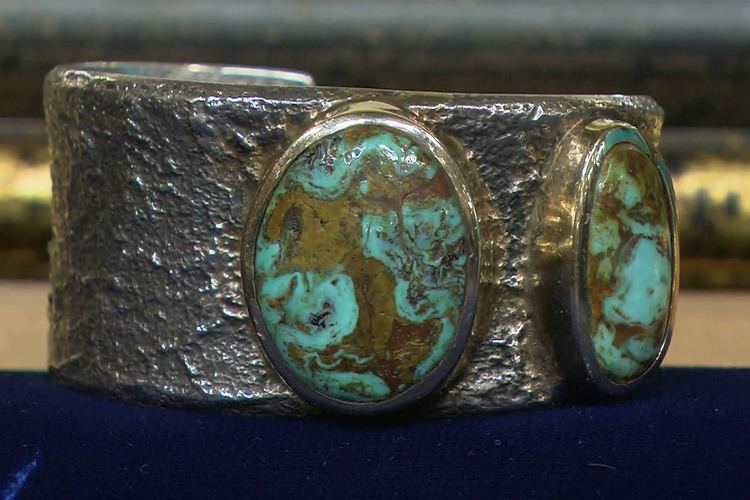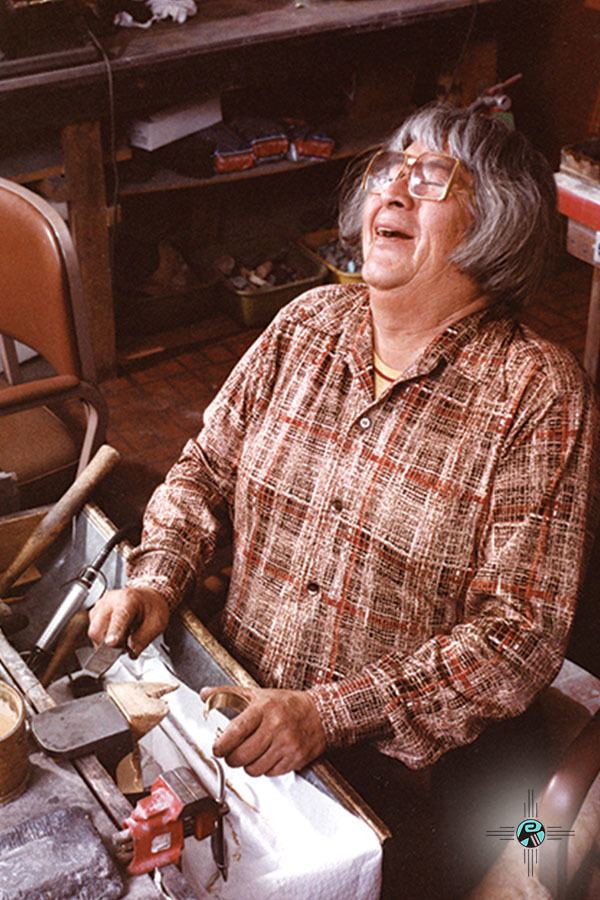Education Alfred University Spouse Otellie Loloma | Role Artist Name Charles Loloma | |
 | ||
Died June 9, 1991, Phoenix, Arizona, United States | ||
Charles loloma ann and rebecca head 1977
Charles Loloma (January 7, 1921 – June 9, 1991) was an American artist of Hopi ancestry.
Contents
- Charles loloma ann and rebecca head 1977
- Contemporary Navajo weaver Marlowe Katoney discuss his art Epi 26 host Dr Mark Sublette
- Early life and education
- Career
- References

Contemporary Navajo weaver Marlowe Katoney discuss his art Epi. 26 host Dr. Mark Sublette
Early life and education

He was born near Hotevilla, Hopi Third Mesa to Rex and Rachael Loloma, of the Badger clan. He attended Phoenix Indian High School in Arizona where he began his artistic career as a muralist and painter when he was asked by Fred Kabotie to assist in the reproduction of murals from the Awatovi site on the Hopi reservation for New York's Museum of Modern Art. Loloma later worked with Kabotie and René d'Harnoncourt on murals in the Federal Building on Treasure Island in San Francisco Bay for the Golden Gate International Exposition in 1939.

Charles married Otellie Pasiyava, a Hopi potter from Second Mesa, Arizona. He served in the military from 1942 to 1945 with the 331st Army Engineers where he was stationed in the Aleutian Islands. In 1947, thanks to the GI Bill, and on the advice of Indian commissioner William H. Beatty, Loloma attended Alfred University's School for American Craftsmen in Alfred, New York. There, he and his wife Otellie both earned a Certificate in Pottery, which was presented on August 15, 1949. In the program, the Lolomas learned how to make stronger mixes of clay along with modern methods of forming and firing pieces, including glazes. Loloma's goal was to bring these techniques to the Hopi people to make them more self-sufficient.
Career

In 1954 he opened a pottery shop in Scottsdale, Arizona. He called his line of pottery Lolomaware.

Although he was an excellent potter and painter, he found his true passion in jewelry making. Some of Loloma’s designs were of outside influences. This brought harsh judgment on his art. Comments made about his art included, “It’s nice but it’s not Indian.” Loloma’s work was rejected from the Gallup Intertribal Art Show three times.

Most Native jewelers use traditional materials such as turquoise, silver and occasionally accented with some coral. Loloma used unconventional materials like sugilite, lapis, ivory, gold, pearls, diamonds and even wood. He used turquoise as an accent to his pieces. He got much of his inspirations from other cultures. Loloma created Hopi interpretations of Egyptian figures.

The work of Charles Loloma was featured in the first Heard Museum Fair in 1961 as well as numerous Fairs held by the Heard in subsequent years. In 1962, Lloyd Kiva New became the director of the Institute of American Indian Arts in Santa Fe and recruited Charles and Otellie Loloma as some of the first instructors of the institute, where Charles became the director of the plastic arts department. After a few years there, Loloma returned to Hotevilla and set up his own studio, also selling his jewelry in the Heard Museum Shop and several other galleries. As his art evolved, he explored the techniques of tufa casting and inlay using stones of varying heights. His technique of including "inner gems" on the interior surfaces of his pieces expressed his belief that "people have inner gems. This is why I include inner gems in much of my work." Loloma had many accomplishments across the globe. He won first prize in the Scottsdale National Indian Art Exhibition seven years in a row. He had two shows in Paris. He was featured in NET and PBS in 1972. In Japan he was the artist in residence in 1974. He was also commissioned to make a piece for the queen of Denmark. He visited many countries; France, Egypt and Colombia to name a few. His achievements inspired other Native jewelers such Jesse Monongye.
Loloma's work was explored in a series on American Indian artists for the Public Broadcasting System (PBS). Other artists in the series included R. C. Gorman, Helen Hardin, Allan Houser, Joseph Lonewolf, and Fritz Scholder.
Although Loloma died in 1991, he remains an inspiration to Native artists. “We are a very serious people and have tried hard to elevate ourselves, but in order to create valid art you have to be true to your health and your heritage”.
